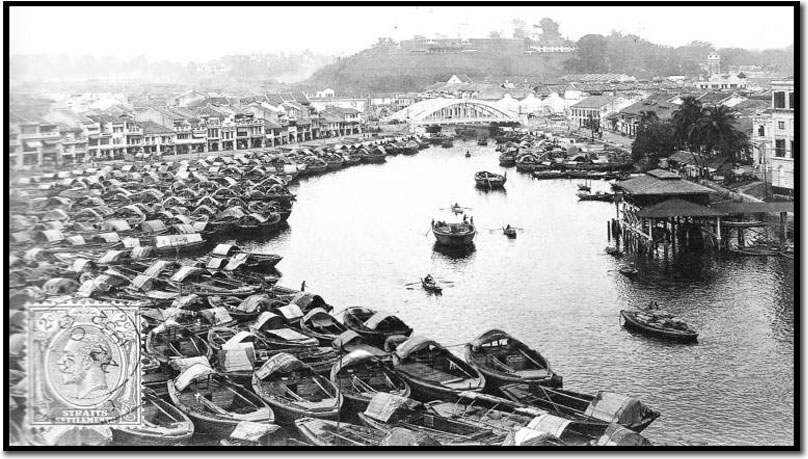|
The Singapore River in 1930. Note the pervading sense of order in what was an extremely busy focal-point in a robust colony. The postage –stamp at bottom-left is a fitting symbolic tribute to the reign of King George V.
Source: Cheah Jin Seng. Singapore: Singapore: 500 early postcards
The Singapore River has long been the nerve-centre of the island. Raffles’ arrival there and the construction of the settlement at the River mouth was really only a continuation of function from the past. This 1930 scene of the River remained a constant all the way up till the 1980s, when the government removed the “bumboats” and focussed all port activities at the modern facilities all along the south-west coast. Beneath the order depicted in the postcard, the River by the 1970s was actually very filthy, with pollution caused by the disposal of rubbish, sewage and other by-products of industries located along the river's banks, pig wastes from pig and duck farms, unsewered premises, street hawkers and vegetable wholesaling. With the massive clean-up, the role of the River has transformed from sustaining trade to encouraging tourism. It remains today, an exceptionally popular area for visitors and citizens alike.
|

